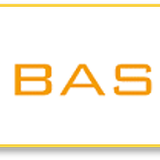Dampak Rasio Keuangan Dan Pandemi COVID-19 Terhadap Kinerja Keuangan
DOI:
https://doi.org/10.24912/je.v26i3.794Abstract
This study has the purpose to determine the effect of ratios on financial performance by using current ratios, quick ratios, dan debt to assets ratios as measuring instruments for the dependent variable and using return on assets as measuring instruments for independent variables. The population of the financial statements is PT Multisport Indonesia for the 2019-2021 period. The sampling technique is purposive sampling. The analytical method to test the hypothesis is path analysis. Data processing using Eviews10 software. The result of the study found that the current ratio had a significant positive effect on return on assets, the quick ratio had a significant negative effect on return on assets, and the debt on assets ratio had an insignificant negative effect on return on assets.
References
Bhama, V., Jain, P. K., and Yadav, S. S. (2016). Testing the pecking order theory of deficit and surplus firms: Indian evidence. International Journal of Managerial Finance, 12(3), 335–350. https://doi.org/10.1108/IJMF-06-2014-0095.
Borhan, H., Naina Mohamed, R., and Azmi, N. (2014). The impact of financial ratios on the financial performance of a chemical company. World Journal of Entrepreneurship, Management and Sustainable Development, 10(2), 154–160. https://doi.org/10.1108/wjemsd-07-2013-0041.
Corelli, A. (2019). Chapter 14 Liquidity Risk. 4, 331–367.
Dalnial, H., Kamaluddin, A., Sanusi, Z. M., and Khairuddin, K. S. (2014). Detecting Fraudulent Financial Reporting through Financial Statement Analysis. 2(1), 17–22. https://doi.org/10.12720/joams.2.1.17-22.
Danso, A., Lartey, T. A., Gyimah, D., and Adu-Ameyaw, E. (2020). Leverage and performance: do size and crisis matter? Managerial Finance, 47(5), 635–655. https://doi.org/10.1108/MF-10-2019-0522.
Kasmir. (2016). Pengantar Manajemen Keuangan. In Prenada Media. Prenada Media.
Franco Modigliani and Merton H. Miller. (1958). The Cost of Capital, Corporation Finance and the Theory of Investment. The American Economic Review, Vol. 48, N, 37.
Goel, U., Chadha, S., and Sharma, A. K. (2015). Operating liquidity and financial leverage : Evidences from Indian machinery industry. Procedia - Social and Behavioral Sciences, 189, 344–350. https://doi.org/10.1016/j.sbspro.2015.03.230.
Horvath, R., and Seidler, J. (2013). How bank competition influence liquidity creation Institute for Economies in Transition.
Kantakji, M. H., Abdul Hamid, B., and Alhabshi, S. O. (2020). What drives the financial performance of general takaful companies? Journal of Islamic Accounting and Business Research, 11(6), 1301–1322. https://doi.org/10.1108/JIABR-06-2018-0077
Kuchler, A. (2020). Leverage, investment, and recovery from a financial crisis: the role of debt overhang. Studies in Economics and Finance, 37(1), 143–159. https://doi.org/10.1108/SEF-04-2019-0158.
Kurniati, S. (2019). Stock returns and financial performance as mediation variables in the influence of good corporate governance on corporate value. Corporate Governance (Bingley), 19(6), 1289–1309. https://doi.org/10.1108/CG-10-2018-0308.
Marfianto, dan Nuryasman, M. (2019). Pengaruh Rasio Keuangan , Tata Kelola Perusahaan Terhadap Kesulitan Keuangan Pada Perusahaan Pertambangan. Jurnal Manajetial Dan Kewirausahaan, I(4), 862–871.
Marginingsih, R. (2017). Penilaian Kinerja Perusahaan Dengan Menggunakan Analisa Rasio Keuangan Pada Perusahaan Telekomunikasi Di Indonesia. XVII(1), 14–21.
Mulyawan, S. (2015). Manajemen Keuangan. Pustaka Setia.
Nikolov, B. (2013). Dynamic Corporate Liquidity ∗.
Nuryasman, M., Amelinda, R., and Nuringsih, K. (2020). The Propensity for Social Entrepreneurship During the Coronavirus Outbreak. Jurnal Manajemen, 24(2), 174. https://doi.org/10.24912/jm.v24i2.637.
Pokharel, K. P., Regmi, M., Featherstone, A. M., and Archer, D. W. (2019). Examining the financial performance of agricultural cooperatives in the USA. Agricultural Finance Review, 79(2), 271–282. https://doi.org/10.1108/AFR-11-2017-0103.
Pranita, E. (2020). Diumumkan Awal Maret, Ahli: Virus Corona Masuk Indonesia dari Januari. Kompas.Com. https://www.kompas.com/sains/read/2020/05/11/130600623/diumumkan-awal-maret-ahli--virus-corona-masuk-indonesia-dari-januari.
Samben, R., dan Pattisahusiwa, S. (2017). Analisis kinerja keuangan. 14(1), 6–15.
Soraya Novika. (2021). Setahun Corona di RI, Ini 3 Dampaknya ke Ekonomi. DetikFinance. https://finance.detik.com/berita-ekonomi-bisnis/d-5479673/setahun-corona-di-ri-ini-3-dampaknya-ke-ekonomi.
Stewart, C. (1984). NBER Working Paper it11393 Capital. 1393.
Tampubolon, lambok D. (2015). Analisis Pengaruh Rasio …. 12(1), 1–12.
Widnyana, I. W., Wiksuana, I. G. B., Artini, L. G. S., and Sedana, I. B. P. (2020). Influence of financial architecture, intangible assets on financial performance and corporate value in the Indonesian capital market. International Journal of Productivity and Performance Management, 1999. https://doi.org/10.1108/IJPPM-06-2019-0307.
Zainal, I., dan Marlius, D. (2016). PT . PEGADAIAN CABANG ULAK KARANG. 1–10.
Zeitun, R., and Saleh, A. S. (2015). Dynamic performance, financial leverage and financial crisis: Evidence from GCC countries. EuroMed Journal of Business, 10(2), 147–162. https://doi.org/10.1108/EMJB-08-2014-0022.
Downloads
Published
How to Cite
Issue
Section
License
Copyright (c) 2021 Jurnal Ekonomi

This work is licensed under a Creative Commons Attribution-NonCommercial-ShareAlike 4.0 International License.
This journal provides immediate open access to its content on the principle that making research freely available to the public supports a greater global exchange of knowledge.

This work is licensed under a Creative Commons Attribution-NonCommercial-ShareAlike 4.0 International License.


















